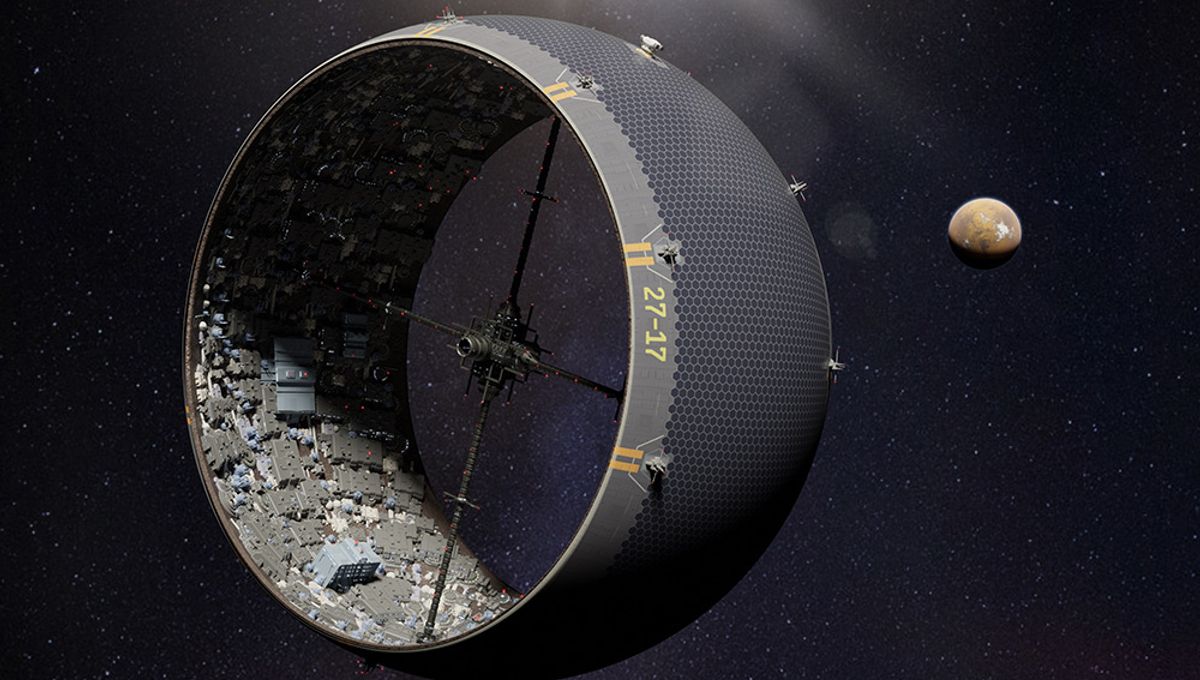
As humanity ponders a future beyond the confines of Earth’s atmosphere, a team of researchers has put forward a semi-serious plan for creating giant space metropoles out of disintegrated asteroids. Presenting their findings in a new study, the authors say that taking advantage of the inherent crumbliness of space rocks could be cheaper and easier than building entirely new structures in orbit.
“Our paper lives on the edge of science and science fiction,” said study author Adam Frank in a statement. “We’re taking a science fiction idea that has been very popular recently – in TV shows like Amazon’s The Expanse – and offering a new path for using an asteroid to build a city in space.”
The researchers set out to determine if asteroids could be harnessed to create travelling “O’Neill cylinders”, a classic space habitat design named after former NASA physicist Gerard O’Neill. Consisting of two rotating cylinders that produce artificial gravity by virtue of their spin, these inhabitable structures have appeared in numerous sci-fi movies and TV series.
Unfortunately, O’Neill cylinders have yet to make the leap from the screen to reality due to a combination of technological and financial barriers. The study authors therefore wondered if some of these hurdles could be overcome by building cities on asteroids instead.
“All those flying mountains whirling around the sun might provide a faster, cheaper, and more effective path to space cities,” says Frank. However, after running a few calculations, the team concluded that most large asteroids lack the tensile strength to withstand being spun, and would disintegrate long before any artificial gravity could be created.
Smaller asteroids, meanwhile, aren’t even deserving of the title ‘space rock’, as they are actually just hurtling piles of rubble, loosely held together by weak gravitational forces. Not put off by these flaky space lumps, the researchers propose to “take advantage of the rubble composition and to intentionally disintegrate an asteroid with overwhelming spin so as to capture it into a larger cylindrical external containment structure.”
Essentially, their plan involves encapsulating an asteroid with an “accordion-like” like structure made of ultra-thin carbon nanofibers, like a giant inflatable bag. Using “solar-powered rubble cannons,” the authors say that the rocky material can be fired outwards, causing the asteroid to spin and break apart.
As it is flung outwards, the rubble would cause the container to expand until it reaches its maximum extent, at which point it would form a cylindrical shape. Rocky material would continue to accumulate along the inside of this cylinder, providing a surface on which people could live.
Importantly, the rocky layer would be thick enough to shield all inhabitants from solar radiation, while the spin would create artificial gravity.
“Based on our calculations, a 300-meter-diameter [984 feet] asteroid just a few football fields across could be expanded into a cylindrical space habitat with about [57 square kilometers] 22 square miles of living area,” Frank says. “That’s roughly the size of Manhattan.”
“Obviously, no one will be building asteroid cities anytime soon, but the technologies required to accomplish this kind of engineering don’t break any laws of physics,” he adds. In fact, all of the components of the authors’ asteroid city – including the carbon nanofiber coating and the engines that would be used to spin the structure – are already being developed.
Furthermore, the researchers say that their design “is likely to be less costly and complex in terms of engineering than building a classic O’Neill habitat in which all structural materials must be fabricated and transported to the construction orbit.”
The study is published in the journal Frontiers in Astronomy and Space Sciences.
Source Link: Asteroids Could Be Spun Into Manhattan-Sized Space Cities… In Theory